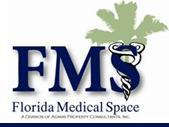|
Underwriter
|

NEED MEDICAL OFFICE SPACE? CALL (954) 346-8200 Ext. 201 __________________
|
|
Effects on ventilation of thin catheter surfactant administration during spontaneous breathing
| |
The use of mechanical ventilation for respiratory distress in VLBW babies carries significant risks. While aggressive continuous positive airway pressure appears to prevent bronchopulmonary dysplasia (BPD), this too is an invasive procedure and many of these patients eventually require mechanical ventilation.
A study which compares a technique utilizing a thin catheter to administer surfactant during spontaneous breathing in infants with signs and symptoms of RDS, to an endotracheal intubation/ventilation/ extubation technique for surfactant administration, reveals that "thin catheter surfactant administration", during spontaneous breathing, VLBW babies require less mechanical ventilation in the first 72 hours of life, have nasal CPAP/mechanical ventilation times and BPD rates significantly reduced.
Journal of Pediatrics
|
"10 Step" plus - a breast feeding approach for preterm/sick neonates
| |
Preterm and sick infants necessitate a specific breast feeding policy. These include:
1. Facilitate early, continuous and prolonged skin-to-skin contact (kangaroo care).
2. Early initiation of breast- feeding with mother support during infant hospital stay; infant breastfeeding confidence and stability should be used to guide onset and continuation of breastfeeding.
3. Minimize infant separation from parent.
4. Utilize semi-demand feeding to transition to exclusive breastfeeding.
5. Pacifiers may be used during tube-feeding.
6. Nipple shields can be utilized to facilitate establishment of breast- feeding.
7. Discharge programs should include access for parents to lactation and breastfeeding support groups (professional and peer).
8. Follow up is essential.
Journal of Human Lactation
|
|
Updates in Pediatrics is brought to you by:
| |
|
|
|
Childhood migraine headache- is there an association with infantile colic?
It appears from a study out of 3 European tertiary care hospitals, that there is an association between children 6-18 years of age who present with migraine headaches and their presentation early in life with infantile colic.
Mothers with migraine are >3.2 times more likely to have an infant with colic, thus it appears likely that those genes that express themselves as greater sensitivity to stimuli early in life (with excessive crying) are later expressed as migraine headaches.
If infant colic is a migraine-related disorder, behavioral therapy limiting certain types of stimuli, or pharmacologic agents, used to treat migraines (and safe in early infancy e.g. acetaminophen) might be of value.
Journal of Pediatrics
|
Video Feature
 | | Is it colic? How to tell if your baby is suffering from colic |
Infacol via YouTube
|
|
Do antipyretics in children with acute infections prolong febrile illness?
A retrospective systematic review of Medline and EMBASE databases was undertaken to identify studies in which authors compared antipyretic treatments for fever in children to other methodologies used to lower temperatures. Antipyretics lower fever temperature faster than non-pharmacological methods, and do not appear to slow its resolution in children.
Journal of Pediatrics |
Effect of nutritional rehabilitation on gastric motility/somatization in anorexia nervosa (AN)
A study of 16 adolescent female AN patients (vs. 22 healthy controls) examined gastric function (gastric emptying and gastric accommodation after a meal), somatic complaints, anxiety symptoms, and functional gastrointestinal disorders (FGID's) before and after 3-4 months of nutritional rehabilitation. Adolescents with AN have impaired gastric accommodations, more somatic complaints, anxiety disorders and FGID's than normals. Following nutritional rehabilitation, gastric accommodation, somatic complaints and FGID's improve, though symptoms of anxiety persist. Journal of Pediatrics
|
In 2012 the American Academy of Pediatrics (AAP) reviewed all the evidence associated with male infant circumcision and recommended against its routine use. The AAP however notes that the technique's benefits outweigh the risks and justifies any parent's choice to have the procedure performed. Large studies in adults undergoing circumcision in the USA support the substantial medical benefits (to prevent urinary tract/HIV infection, some sexually transmitted infections, and penile cancer) found.
JAMA
|
Underwriting Opportunities
|
With a circulation of over 4,900, Updates in Pediatrics offers an excellent opportunity to promote your brand at affordable rates.
|
|
|